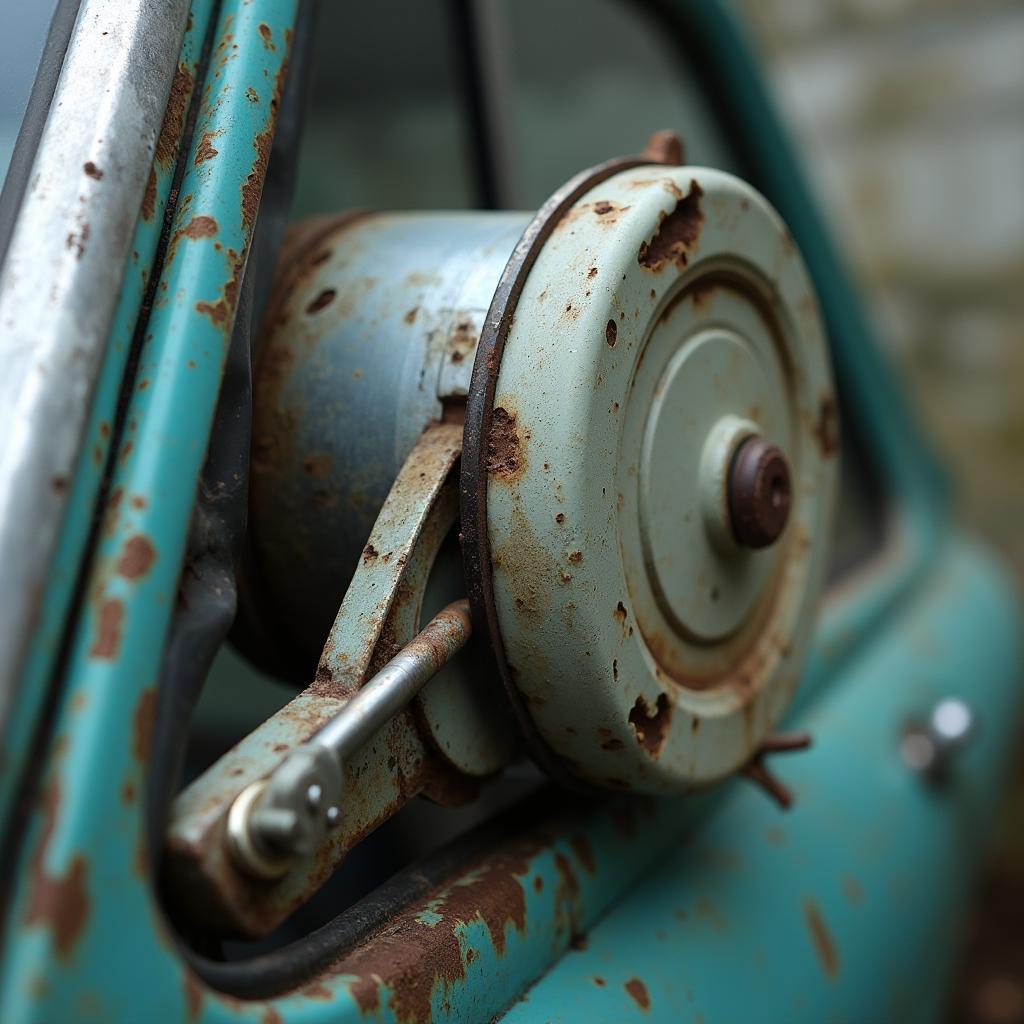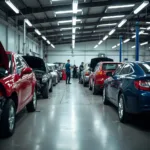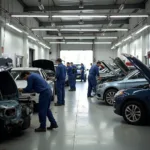Owning a classic car is a labor of love, and sometimes, that love means troubleshooting why your power windows decided to take a permanent vacation. While classic cars hold a certain charm, their power window systems can be a source of frustration when they fail. Fear not, fellow vintage car enthusiast, this guide will equip you with the knowledge to diagnose and potentially fix those stubborn windows.
Understanding Your Classic Car’s Power Window System
Before we dive into repairs, let’s demystify these systems. Most classic car power windows operate using a simple yet effective combination of motors, regulators, switches, and wiring.
- Motor: The powerhouse of the operation, providing the muscle to move the window up and down.
- Regulator: This mechanism guides the window glass within the door frame, ensuring smooth and controlled movement.
- Switches: These control the flow of electricity to the motor, dictating whether the window goes up, down, or stays put.
- Wiring: The circulatory system connecting all components and delivering power.
Common Culprits Behind Power Window Failure
Years of use (and sometimes disuse) can lead to various power window issues. Here are the usual suspects:
- Worn-Out Motors: Like any mechanical component, motors degrade over time. If your window moves slowly, struggles, or emits a grinding sound, a failing motor might be the culprit.
- Faulty Switches: W Worn or corroded switches can disrupt the electrical flow, leaving you with an unresponsive window.
- Busted Regulators: Broken cables or worn gears within the regulator can cause the window to jam, move unevenly, or fall out of alignment.
- Wiring Woes: Over time, wiring can become frayed, corroded, or disconnected, interrupting the flow of power and rendering your power windows useless.
Diagnosing the Issue: Playing Power Window Detective
Before you start ordering replacement parts, it’s crucial to pinpoint the root of the problem. Here’s how:
- Listen Carefully: Unusual noises like grinding, clicking, or whirring can provide valuable clues.
- Feel for Resistance: When operating the window, note any unusual resistance or binding.
- Inspect the Switches: Check for loose connections, corrosion, or physical damage to the switch itself.
- Examine the Wiring: Trace the wiring harness for any signs of wear, damage, or disconnections.
DIY Repair or Call in the Pros?
Some power window repairs are straightforward enough for the home mechanic. However, others require specialized knowledge and tools best left to professionals.
DIY-Friendly Fixes:
- Switch Replacement: This is usually a simple swap involving disconnecting the old switch and connecting the new one.
- Wiring Repair: If you’re comfortable with basic electrical work, you might be able to repair minor wiring issues.
When to Call a Mechanic:
- Motor Replacement: Replacing a motor often involves removing the door panel and regulator, which can be complex.
- Regulator Repair/Replacement: This job often requires specific tools and knowledge of your car’s make and model.
Keeping Those Windows Rolling: Preventive Maintenance
Prevention is always better than cure! Here’s how to keep your power windows happy:
- Regular Operation: Don’t let your windows sit unused for long periods. Regularly raising and lowering them keeps the mechanisms lubricated and prevents parts from seizing up.
- Keep it Clean: Dirt and debris can wreak havoc on your power window system. Clean the window tracks and lubricate the moving parts periodically.
- Address Issues Promptly: Don’t ignore warning signs like slow operation or strange noises. Addressing problems early can prevent more significant damage down the road.
Conclusion
Troubleshooting classic car power window problems might seem daunting at first, but armed with the right information and a bit of patience, you can get those windows rolling smoothly again. Remember, listening to your car and addressing issues promptly are key to enjoying those vintage rides for years to come.



